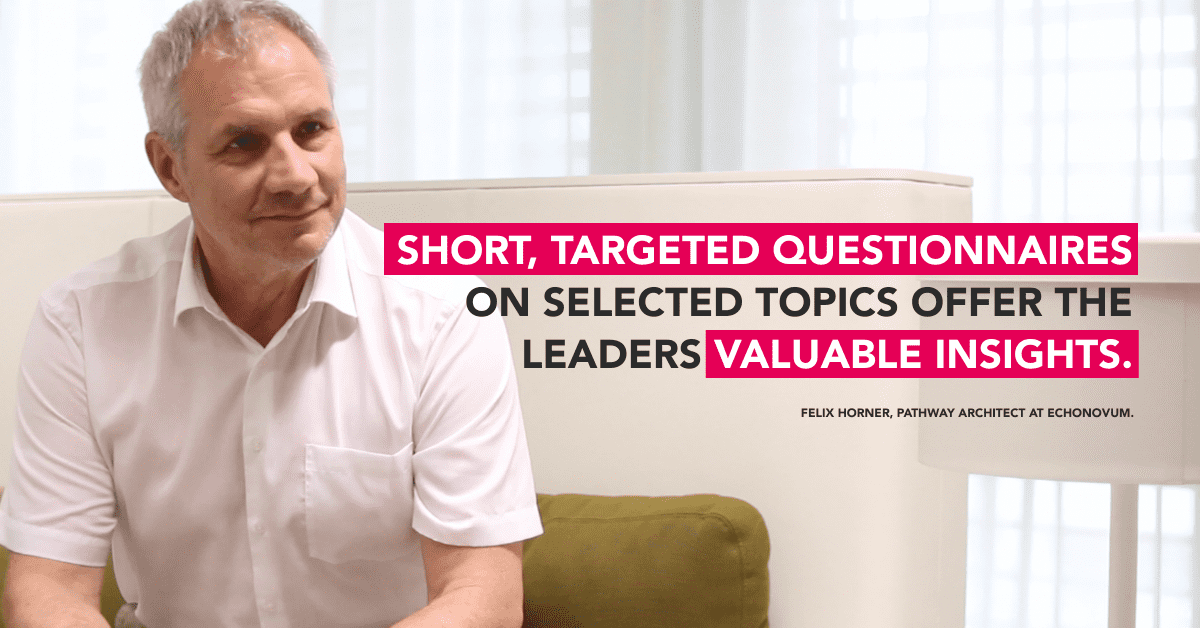Why employees can be understood, but not motivated
Why organizations need to understand their employees to grow sustainably: an interview with Felix Horner, Pathway Architect at echonovum.
About the measurability of employee relationships
Felix Horner is Pathway Architect at echonovum. He drives the development of ECHONOVUM pathway and measurement models for various stakeholder groups. Among other things, these models allow organizations to collect information on employee satisfaction and use these findings to tap into unused potential. We spoke to Felix about why companies need to understand their employees better.
Felix, terms such as employee motivation, employee satisfaction, employee engagement and employee loyalty are trendy. However, they can be misleading. How do you define them? How can we quantify or influence these conditions?
"I think that it is not possible to motivate employees. Instead, employees bring motivation with them to the workplace, and it is the employer’s job to unleash it. It is up to every manager to design their organizational framework in such a way that employee motivation can make an impact and so that the corporate energy flows in the direction of the client and of the company’s overriding objectives, with as little resistance as possible. That is why it is essential to find out whether or not the organizational framework is working.
Several scientific studies have shown that employee satisfaction is a vital prerequisite or a crucial component when it comes to establishing employee loyalty, let alone maintaining it. If you want to measure employee loyalty, you can sound it out by asking employees questions about their levels of satisfaction. As satisfaction drops, the employee’s bond with the company will slowly start to erode. For this reason, it is essential to introduce corresponding measures to increase satisfaction.
However, it is not enough to simply ask employees about their satisfaction levels if you are interested in understanding your employees’ overall mental state, as there are many other factors at play. Examples are how well an employee’s requirements align with the organizational framework, their attitudes towards their work and the company, the climate in the office, and their satisfaction with their job as a whole and in particular with the meaningfulness of their work.
Quantifying employee engagement is centrally anchored in the ECHONOVUM measurement model through various status and target figures. That allows us to gain insight into the dedication and motivation of employees with just a few questions about their attitudes and behaviors."
So what you’re saying is that an organization can use precisely targeted questions to gain information on essential aspects of employee relations. Is it possible to ask too many questions?
"Since a company is something like a social organism, you should check its pulse regularly. However, a few questions posed at important points of contact are sufficient. Five to ten questions are enough to provide the data necessary for the measurement model. These questions also include long-term trend questions that show us how employee engagement develops over time.
For this reason, the rule of thumb is: a few short questions that are as precise as possible and correspond to the employees’ situation (transactional). For example: what did you think about the onboarding program? Did you receive a warm welcome from your colleagues? Do you feel welcome at the company? Do you feel proud to be part of this company?"
Why do companies need better insights into their employees? Isn’t it enough to do an employee survey every two to three years?
"Many factors have an impact on companies and therefore, also on the attitudes and behavior of employees change exceptionally quickly. It is more effective and efficient to take into account the speed at which these factors can shift and change and check in with employees at shorter intervals. For this reason, it’s not enough to carry out a lengthy survey every two to three years. Depending on the situation in a company or organization, there can be different areas where problems are co-occurring. Short, targeted questionnaires on select topics offer the leaders valuable insights. With appropriate measures, the further development of the organization is possible in good time, or it can be brought back into balance."
